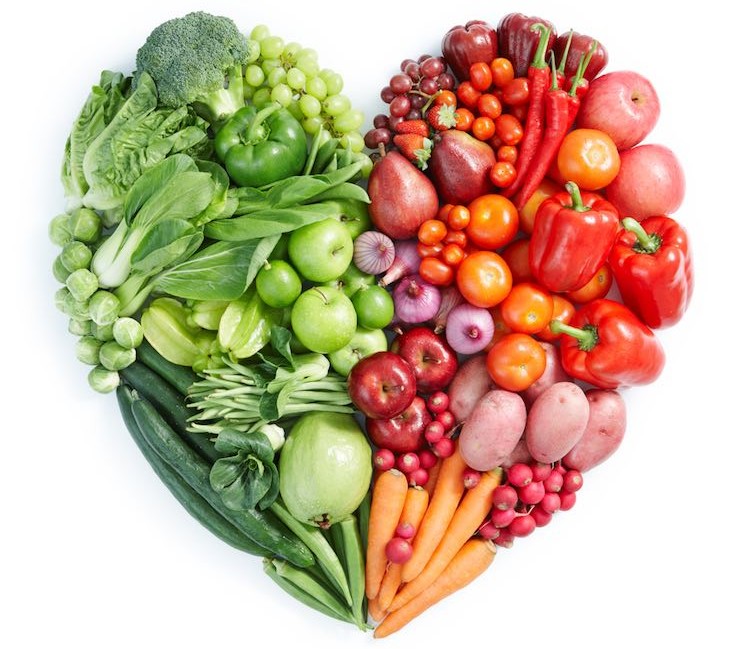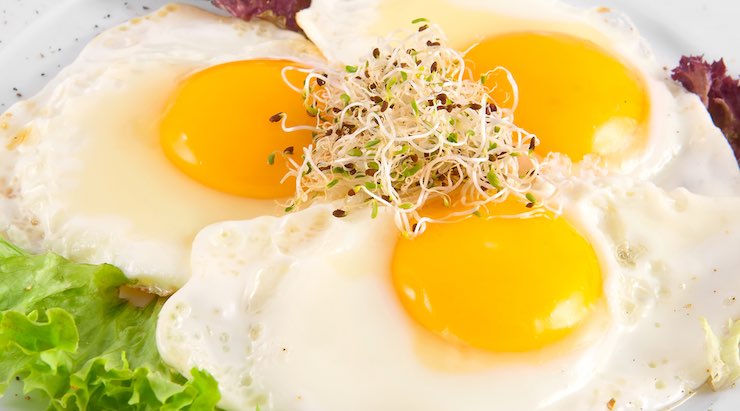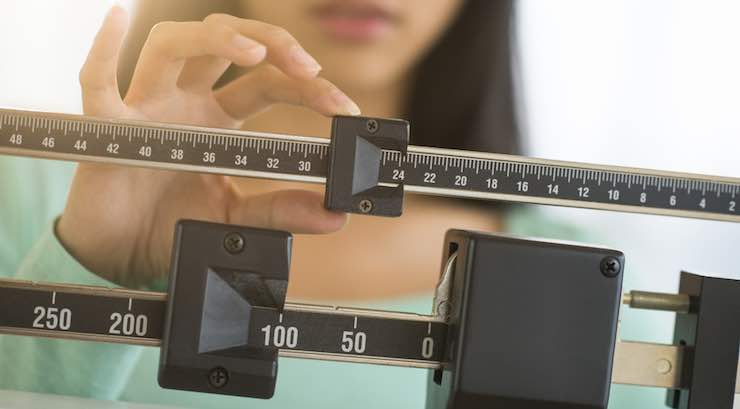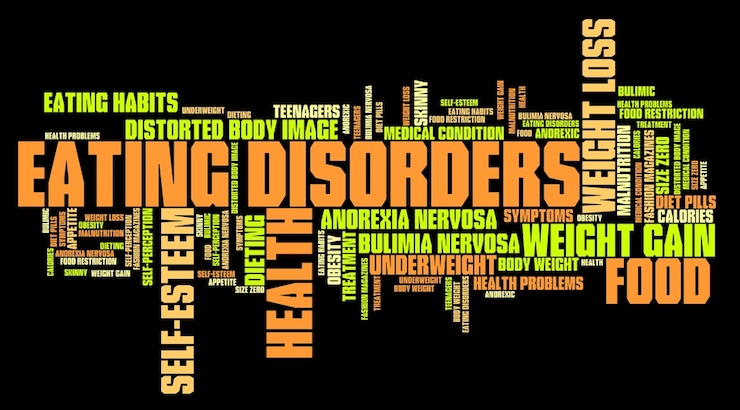Food for Thought – Don’t Worry Too Much About Weight
The latest Sports Nutrition News from Nancy Clark: Achieving a weight that is healthy.
While many athletes yearn to be leaner and lighter, some athletes have to be leaner and lighter. As a soccer athlete, your sport does not have weight classes (as do wrestling and football), but the sport is sensitive to weight. You want to be sturdy and strong, but not carry excess flab. Hence, you may put pressure on yourself to achieve a weight that might defy your genetic physique. Some soccer athletes can achieve the desired leanness healthfully; others struggle with poor energy, lethargy, and depressed mood.
It’s no secret that disordered eating practices are common among weight-conscious athletes. An estimated 30% to 60% of active women and up to 19% of active men struggle with finding the right balance of food and body-fatness (1). Their quest to be light easily leads to restrictive food intake, over-exercising, and too little fuel to support normal body functions. In women, strict diets trigger amenorrhea which leads to weaker bones, higher risk of stress fractures (today) and early osteoporosis (in the future). It’s hard to be a life-long runner when your skeleton won’t support your goals.
While the combination of amenorrhea, disordered eating, and stress fractures has been dubbed The Female Athlete Triad, today’s sports medicine professionals acknowledge that weight-conscious men also experience medical issues. For example, a study of competitive male cyclists suggests as many as 25% had osteopenia (the early stags of osteoporosis) and 9% had full-blown osteoporosis (low bone density). The exact cause of the poor bone health is yet to be determined (2).
 Up to 94% of elite athletes who participate in weight-sensitive sports report dieting and using extreme weight control measures to achieve their desired weight (1). They commonly experience dizzy spells, needless fatigue, headaches, constipation, and poor sleep. Symptoms of long-term under-eating include hair loss, dangerously low heart rate (<40 beats per minute), electrolyte imbalance, constipation, anemia, stress fractures, mood swings, social withdrawal, insomnia, and inability to concentrate well—to say nothing of poor performance. After all, you can only compete at your best if you can train at your best. You can only train at your best if you are doing a good job of fueling up before training and refueling well afterwards.
Up to 94% of elite athletes who participate in weight-sensitive sports report dieting and using extreme weight control measures to achieve their desired weight (1). They commonly experience dizzy spells, needless fatigue, headaches, constipation, and poor sleep. Symptoms of long-term under-eating include hair loss, dangerously low heart rate (<40 beats per minute), electrolyte imbalance, constipation, anemia, stress fractures, mood swings, social withdrawal, insomnia, and inability to concentrate well—to say nothing of poor performance. After all, you can only compete at your best if you can train at your best. You can only train at your best if you are doing a good job of fueling up before training and refueling well afterwards.
Long-term food restriction easily leads to medical complications that involve not just bones but also the whole body: intestines, heart, hormones, reproductive system, kidneys and brain. It creates psychological stress and depression. Hence, soccer players who need to drop body fat should take the job seriously—not simply resort to starvation diets when the scale creeps up.
So what’s a weight-conscious soccer player to do?
 The best time to lose weight is during the off-season. But soccer players, being human, often procrastinate until the last minute to complete this task. Here are tips to help you make weight healthfully:
The best time to lose weight is during the off-season. But soccer players, being human, often procrastinate until the last minute to complete this task. Here are tips to help you make weight healthfully:
- Find a health professional who can monitor your body fat. If you are a man, do not drop below 5% body fat. Women shouldn’t drop below 12% fat.
- Do not eat less than your Resting Metabolic Rate (RMR), the energy needed for your heart, organs and brain to function. You can roughly estimate your RMR by multiplying your body weight times 10 calories per pound. For example, if you weigh 150 pounds, you need about 1,500 calories to simply breathe and be alive. That’s the equivalent of three 500-calorie meals.
- Add at least 50% more calories than that for daily activities and training. To take the guesswork out of calculating your personal calorie budget and creating an effective food plan, you want to partner with a sports nutritionist who is a registered dietitian (RD).
To find your local sports RD, use the referral network at SCANdpg.org.
More simply (but less personalized), knock off 300 to 600 calories from your typical (non-dieting) day’s intake.
- Deleting two beers (300 calories) and four Oreos (200 calories) could be an easy start to weight loss.
To minimize loss of muscle, try to consume 20 to 30 grams of protein every 3 to 4 hours during the active part of your day.
- This means, 3 eggs for breakfast, 2 (6-oz) tubs of Greek yogurt mid-morning, a can of tuna for lunch, 1 cup cottage cheese mid-afternoon, and a chicken breast for dinner. The portion actually depends on your body size. The target is about 0.7 to 1 gram protein per pound of body weight (1.5 to 2.0 g Pro/kg) when you are cutting calories and are in energy deficit.
- Include carbohydrates to fuel your muscles. Target at least 1.5 g carb per pound of body weight (3 g carb/kg). For a 150-pound soccer player, that means at least 225 grams of carbs (900 calories), preferably more. Divided into meals and snacks, that’s 60 g carb/meal and 30 g each for a morning and mid-afternoon snack. Translated into food, this means enjoy oatmeal with the eggs, banana with the cottage cheese, and rice with the chicken, etc.
- Include a little fat in each meal to add satiety and keep you feeling fed. You also need fat to absorb vitamins A, D, E and K. Choose nutrient-dense fats, such as avocado, peanut butter, almonds, and salmon.
Surround your workout with fuel. That is, eat part or all of your breakfast before you train, so that you have the energy to exercise meaningfully. Include both carbs (to fuel the workout) and protein (to minimize muscle breakdown). This could be yogurt and a granola bar before an early morning workout, and eggs with toast afterwards.
- Plan to eat recovery foods soon after you exercise. To avoid extra calories, simply back your training into a meal. That is, if you practice from 3:00 to 5:00 in the afternoon, eat dinner right way at 5:30 (as opposed to having recovery food and then dinner at 7:00).
Dieting gone awry…
Despite the demands of soccer, try to keep your life in balance. Your whole identity should not be based on being a soccer player, but rather on being a person who enjoys soccer and also has other interests. After all, if you identify yourself as a soccer player, who will you be if you get badly injured and can no longer participate in the sport?
 If you wonder if you have crossed the line and have an eating disorder, take this SCOFF quiz:
If you wonder if you have crossed the line and have an eating disorder, take this SCOFF quiz:
–Do you make yourself Sick because you feel uncomfortably full?
–Do you worry you have lost Control over how much you eat?
–Have you recently lost Over 14 pounds in a 3-month period?
–Do you believe yourself to be Fat when others say you are too thin?
–Would you say that Food dominates your life?
If you answer yes to two of the five questions, seek help from a sports dietitian.
References:
1. Sundgot-Borgen J, Meyer N, Lohman T, Ackland T, Maughan R, Stewart A, Muller W. How to minimize the health risks to athletes who compete in weight-sensitive sports. Review and position statement on behalf of the Ad hoc Research Working Group on Body Composition Health and Performance, under the auspices of the IOC Medical Commission. Br. J Sports Med 2013; 47:1012-1032
2. Smathers A, Bemben M, Bemben D. Bone density comparisons in male competitive road cyclists and untrained controls. Med Sci Sports Exerc 2009; 41:290-6
THE BOTTOM LINE
Performance starts with good nutrition. If you make the effort to travel to soccer games and tournaments, you might as well make the effort to eat well. No amount of training will outperform a bad sports diet.

SIDEBAR: Nutritional and medical advice changes with new discoveries and interpretations. Always check with your medical provider and/or nutritionist for what is best for you and your family. And research and read information on nutrition!
Boston-area sports nutritionist Nancy Clark MS RD counsels both casual exercisers and competitive athletes in her private practice in Newton MA (617-795-1875).
She is the author of the best-selling Nancy Clark’s Sports Nutrition Guidebook and co-author with Gloria Averbuch of Food Guide for Soccer: Tips and Recipes from the Pros.
This article was originally published a year ago and was republished because of interest in social media.






